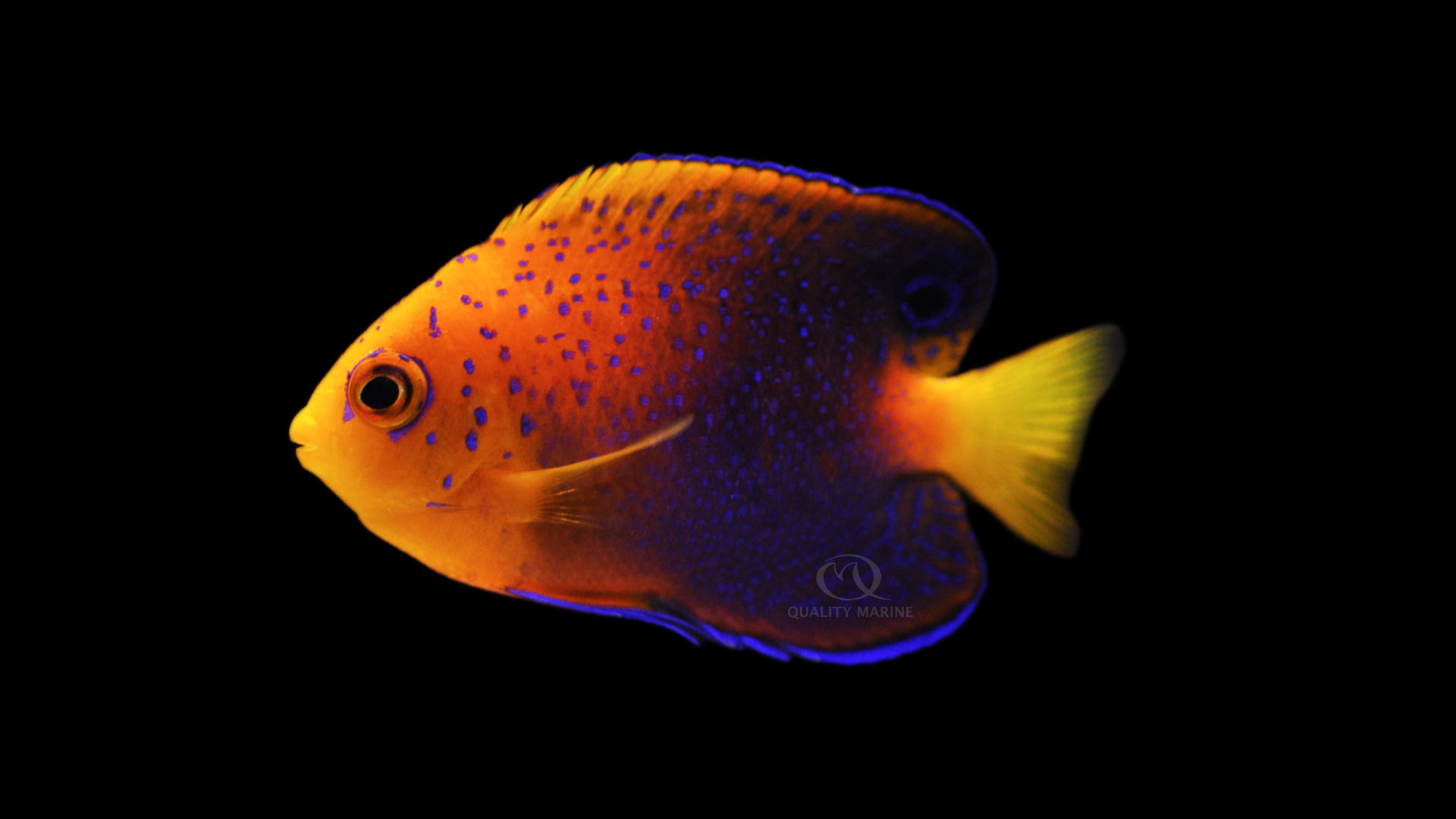We Interruptus Your Regularly Scheduled Programming

We're interrupting regularly scheduled programming to bring you Centropyge interruptus, certainly the biggest, and one of the most desirable dwarf angelfish to grace aquariums anywhere. Trust us, it's better than whatever you were watching. As one of the rarest aquarium fish to show up in North America, its arrival here at Quality Marine deserves some fanfare!
The Interruptus or Japanese Dwarf Angel (as they are commonly called) has a very limited wild range, being mostly collected from off the coasts southern Japan, Midway, and northwestern Hawaiian Islands in the Pacific Ocean. They are a deep-water fish, rarely being seen shallower than 50 feet down, and are more common deeper, some being found in excess of 200 feet down! They are almost always found around reefs where they are solitary or found in monogamous pairs. Likely as a result of spawning patterns, Interruptus Angels are generally only available one time a year.
This is the king of Centropyge angels, with some adults growing over six inches long! A peaceful ruler, they can be kept in community settings, rarely showing aggression to other fish (with the noted exception of other Angels, especially dwarf Angels.) This size means they will need a slightly larger aquarium when they grow out, and we recommend 100 gallons as a minimum for long term holding. As a fish that is a notorious picker and grazer in the wild, they are likely to consume at least some of your coral polyps. A few lucky aquarists that have kept them in reef tanks have reported that this picking is usually confined to clam mantles and Montipora corals, reporting little to no damage to their other Acorporas. This aside, we think the Interruptus is beautiful enough on its own, and would be the showpiece of any aquarium, corals or not.
Water chemistry and water quality wise, this is not a difficult fish to keep, thriving in all of the same parameters any fish/reef keeper is used to. There is however, one exception; this fish loves it cold. Hobbyists should shoot for aquarium temperatures that don't exceed 74 degrees, and hovering just below 70 would be even better. For many of us, this temperature will require a chilling unit, (and honestly most of us reef keepers are already running one anyway). Some of you Northern hobbyists with basement aquarium rooms may be able to get away with room temperature displays. As a deep-water fish, these fish are more likely to be active if you acclimate them to bright displays slowly over time. We've found them to be most active in displays that have places for them to shade themselves and hide from light and activity when they need to.
Feeding this angel is really no different than any other angel. They take a chopped, marine based thawed mix with gusto, and we mix in a protein dense pellet and some preparation that includes sponge matter and algae/spirulina. We've noticed over the years that they generally take to prepared foods well and do better, showing brighter colors / higher activity level with a nutritionally broad diet.
If you've been waiting for your holy grail angelfish, it has arrived. Of all the hyper-desirable fish, this is one of the best in that they are hardy, have straightforward care requirements, are stupendously gorgeous, and have the added draw of being ridiculously rare. The time has come, your fish is here at Quality Marine. Have your LFS call us immediately, or it could be a year until you get another shot at one.